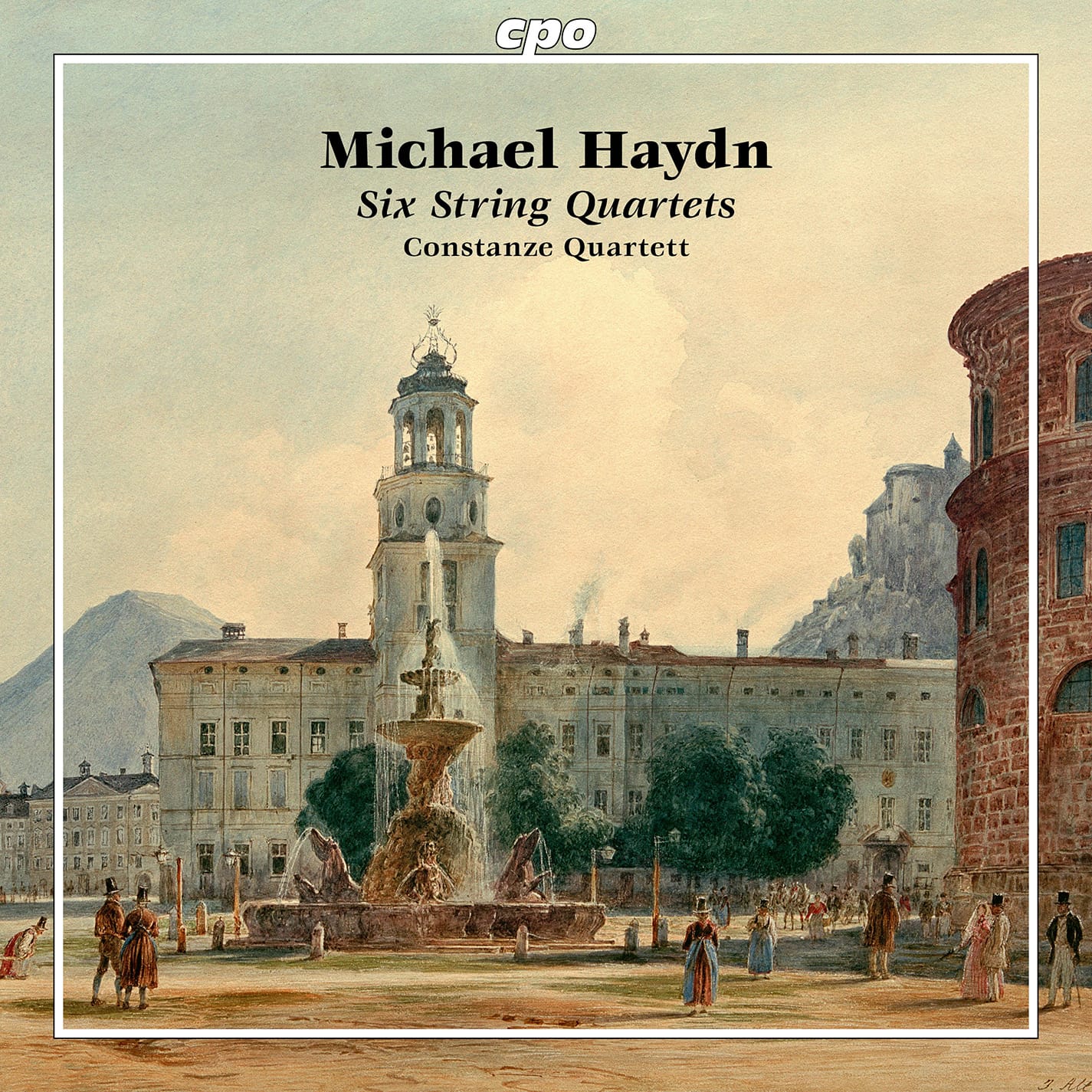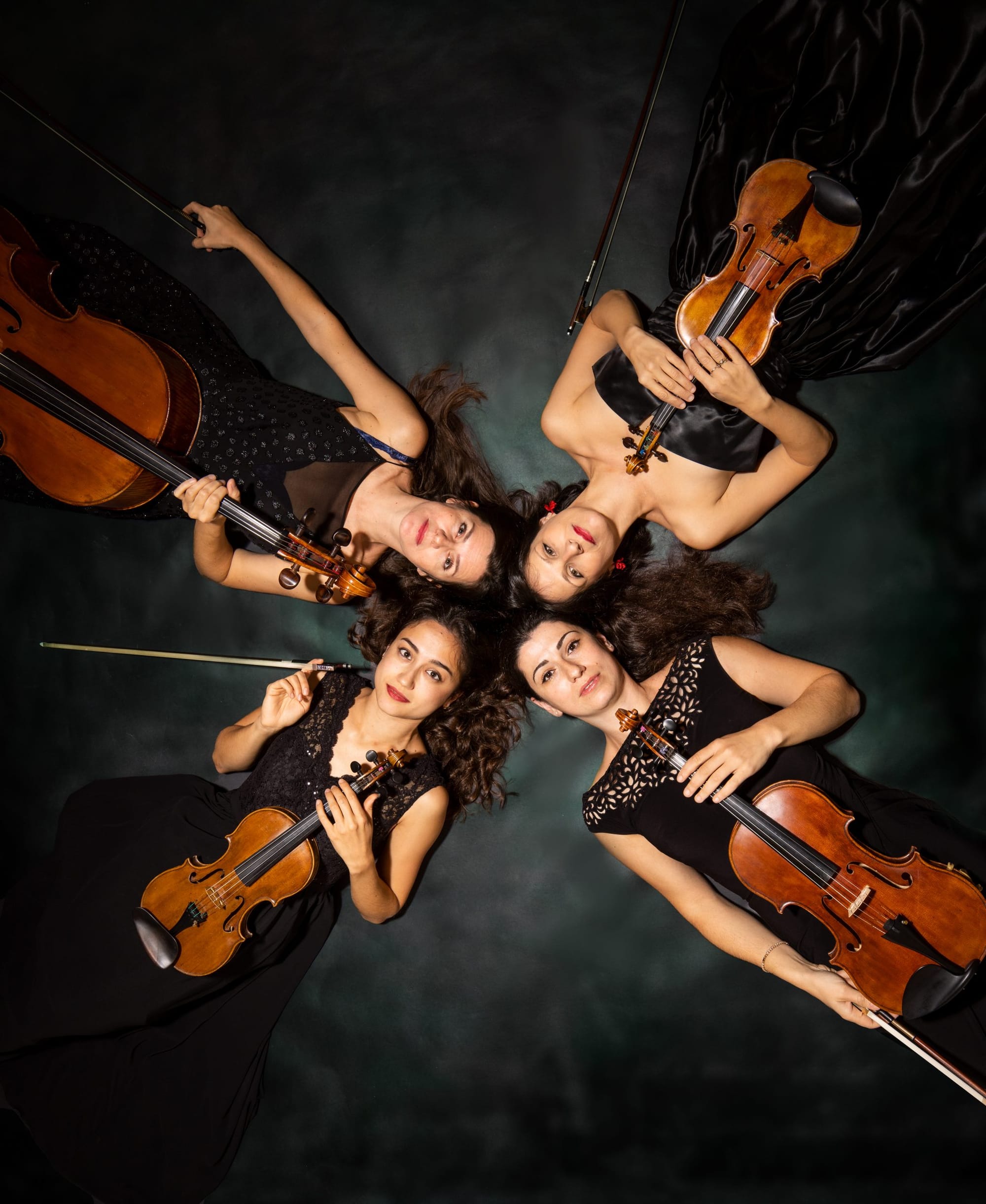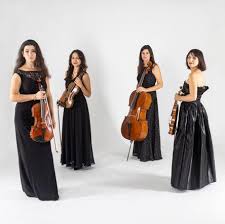
If you haven’t yet come across Michael Haydn (1727-1805), then now is the chance to meet his most civilised of composers. Think J. C. Bach, the “London” Bach.
Michael Haydn was trained musically at St Stephen’s Cathedral in Vienna. He became a close friend of the Mozarts (Wolfgang Amadeus and his composer-violinist-horn player father, Leopold). Amongst Michael Haydn’s composition students numbers on Carl Maria von Weber.
And yet the world needs music like this, especially in such clean, musical accounts such as the Constanze Quartet provide. The first quartet we hear is theB flat, P. 124, and begins with a lovely Andante comodo – in sonata form:
Movements tend towards 2-3 minutes long in these six quartets. Five out of six begin with an Andante of some sort (No. 5 is the exception, an Allegro moderato); fall quartets have a minuet, somewhere: for No. 4 – in the ordering on the disc – it is the finale, for the fifth, the only four-movement work, it is the second movement prior to the only true slow movement on the disc.
The second quartet we hear, E flat major, P 110, is in the nature of a chamber-violin concerto: first violinist Ermelin Pierre Larsen shines. There is no instrumentarium provided (the notes are on the short side for the cpo label), but the sound of the Constanze Quartet is beautifully clean and light, always stylish:
Despite the continued brevity, the second quartet here is more sophisticated: listen to the way Michael Haydn plays with harmonies at the beginning of the finale:
The conversational nature of the first movement of the A-Major, P 122 is delightful, and delightfully realised. Theme are passed between groups within the quartet.
It’s the soloistic nature of the central Menuetto in this quartet that captures the attention, contrasting with the markedly gritty finale (more oomph than anything so far!):

The only quartet in the minor mode is P 120, in G-Minor. It is also formally different, in concluding with a Menuetto. The two movements prior are an Andante un poco allegro (which again showcases the first violin) and an Andante gracioso. The first movement has some nice interior turns that hint at Michael Haydn’s deeper emotions. This is.pure loveliness, and all the more effective for the Constanze Quartet’s refusal to indulge in unnecessary rubato:
I love the way all four parts are so alive in the second movement (Andante gracioso):
… before the Menuetto arrives, resolutely minor-key in demeanour. But it turns out this is no ordinary minutes; instead, it is a mini that is also a se of variations, with some markedly virtuoso writing, including for viola (Elen Goloyan). Michael Haydn’s writing is so expert here:

The four-movement String Quartet in F-Major is the longest, coming in a just under a quarter of an hour. It is of exquisite balance, both between movements, and how the parts in the first movement are nicely equally distributed. The Constanze Quartet offers the very epitome of chamber music here:
Cellist Julia Ammerer-Simma shines in the Menuetto, while first violinist Emelin Pierre Larzen plays with great suavité:
A fine Adagio cedes to a scampering Allegro finale which itself is not all light: there are contrasting interludes of som depth. This movement aligns, perhaps, closest to Mozart of all the pieces on this lovely disc:

Finally, the Quartet in C-Major, P 116, in an exquisitely shaded performance. h music seems so varied in the Constanze Quartet’s performance: the bracing Menuetto un poco Allegro second movement cedes to a positively triumphant final Allegro:
A beautifully life-enhancing disc. Michael Haydn’s eminently civilised music is heard in the best possible way here; the recording, made in Salzburg in July 2020, is superb.
For those with the social media site Facebook, here’s a link to a video of a live performance of a Michael Haydn movement by the Constanze Quartet. The cpo disc is available at Amazon here.
The ‘P’ numbers used in this post are from the Perger-Verzeichnis (Lothar Perger’s 1907 catalogue of Michael Haydn’s works, Wikipedia article). There are also MH numbers available, which refer to the Sherman & Thomas catalog of 1993.
Interestingly enough, the Constanze Quartet has recorded music by Emilie Meyer, whose Symphony No. 1 with the Insula Orchestra under Laurence Equilbey I reported on from Paris here. There’s also a good recording of Meyer’s Symphonies Nos. 1 and 2 on cpo.









